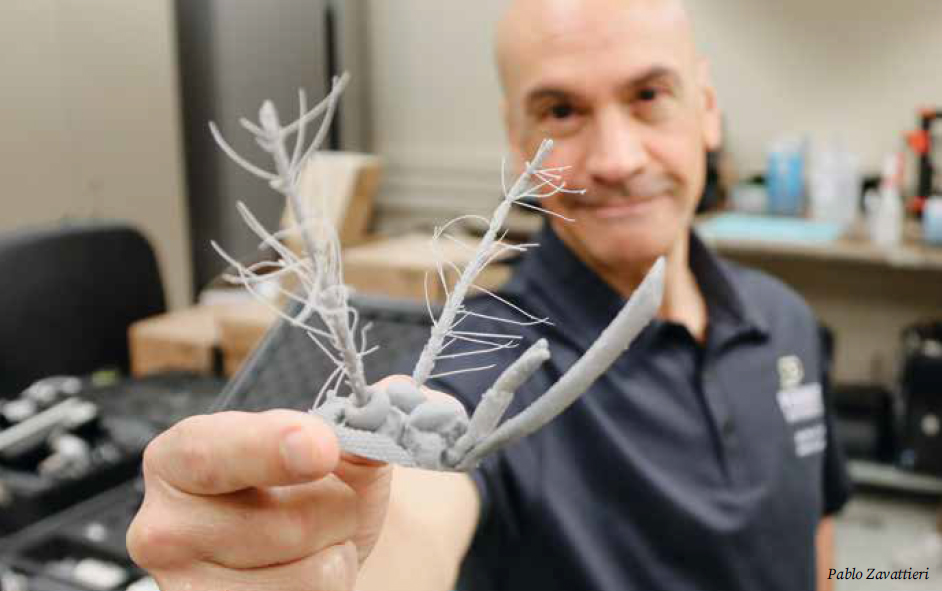Bio-Inspired Design

Mosquito antennae may hold secrets to developing vibration sensors
One of nature’s most disliked creatures may very well unlock a breakthrough in disaster response.
A Purdue University multidisciplinary research team — led by Pablo Zavattieri, the Jerry M. and Lynda T. Engelhardt Professor in Civil Engineering — is recreating mosquito antennae to better study their sensitivity to vibrations. Should the research prove fruitful, it could lead to improvements in monitoring and detecting natural disasters such as earthquakes and tsunamis.
“We’re still in the early stages but we’re pretty optimistic that we’ll at least learn a great deal,” Zavattieri said. “Taking inspiration from nature and using it to advance scientific research has been a core feature of engineering since the very beginning.”
Despite lacking traditional ears, mosquitoes rely on their antennae to navigate the auditory landscape, homing in on crucial sounds amidst the background noise of their own wingbeats. Through analysis of theirantennal features — particularly the arrangement and morphology of sensory hairs — civil and construction engineering PhD student and team researcher Phani Saketh (MSCE ’23) said they have already gained “profound insights into how these adaptations enhance the auditory sensitivity and selective response to environmental cues.”
“Mosquitoes are able to detect frequencies we weren’t even aware of,” Saketh said. “We’re not entirely sure whether the mosquitoes are aware they are sensing these frequencies, or if they do not need to do so. Either way, there appears to be potential to detect frequencies that the mosquitoes do not actively employ.”
In terms of societal impact, insights from mosquito antennae could also inform the development of smart noise-canceling materials, Zavattieri said. These materials, potentially incorporating microfluidic channels or tunable metamaterials, could be used to create soundproofing panels for buildings, noise-canceling headphones or even acoustic cloaking devices.
“Imagine urban environments equipped with bio-inspired sensors, akin to ‘big ears,’ capable of discerning specific sounds amid the hustle and bustle of city life,” Zavattieri said. “In times of crisis — such as earthquakes or other disasters — these sensors become invaluable, swiftly detecting faint signals of distress and guiding rescue efforts to those in need.”
Zavattieri said his team is currently focused on recreating the antennae through 3D printing, using different materials and at varying sizes for frequency testing. He expects to publish their first report in the fall of 2024.
